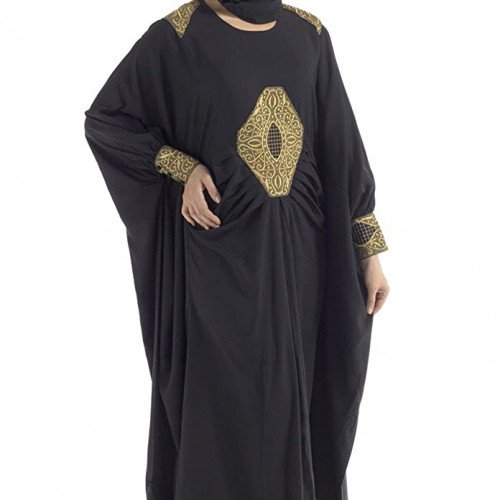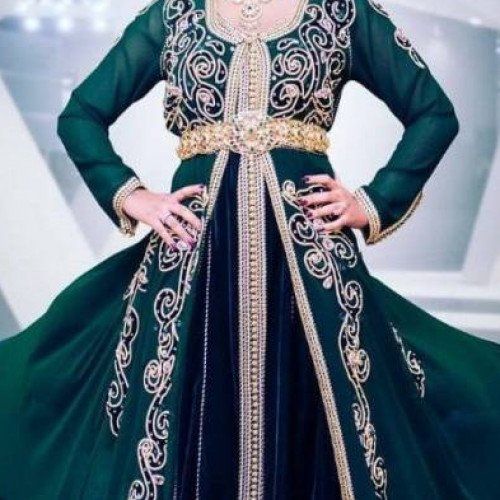Abaya VS Moroccan kaftan

Abaya
The abaya "cloak" (colloquially and more commonly, Arabic: عباية ʿabāyah, especially in Literary Arabic: عباءة ʿabā'ah; plural عبايات ʿabāyāt, عباءات ʿabā'āt), sometimes also called an aba, is a simple, loose over-garment, essentially a robe-like dress, worn by some women in parts of the Muslim world including North East Africa, Somalia, Morocco, and the Arabian Peninsula. Traditional abayat are black and may be either a large square of fabric draped from the shoulders or head or a long kaftan. The abaya covers the whole body except the head, feet, and hands. It can be worn with the niqāb, a face veil covering all but the eyes. Some women also wear long black gloves, so their hands are covered as well. It is common that the abaya is worn on special occasions, such as Mosque visits and Islamic Holiday celebrations for Eid al-Fitr and Eid al-Adha. The Indonesian traditional dress kebaya gets its name from the abaya.
Statistics for this Xoptio

Moroccan kaftan
Moroccan kaftan (in Arabic: قفطان and qafṭān, in Berber: ⵇⴰⴼⵜⴰⵏ, in french: Caftan) is a traditional Moroccan outfit. In the form of a long tunic, in general with long sleeves, worn with a belt (mdama) which can be extended under a lot of styles and colors. The Moroccan kaftan results from the expertise of craftsmen and dressmakers (maalem) of the country, under the influence of Berber (Amazigh) and Andalusian cultures, it has become also a part of the booming Moroccan textile sector, which accounts for 30% of the country's industrial employment and 15% of its exports.It is considered to be the ultimate formal attire for Moroccan women during ceremonies (weddings, baptisms, religious festivals). Moroccan stylists have modernized the traditional kaftan by adapting it to the particularities of the current era. The Moroccan kaftan has gained popularity after being introduced by major clothing lines, and stylists, through prestigious fashion shows, such as the Oriental Fashion Show during "Fashions week " around the world; as well as the promotion work of Moroccan magazines like "Femmes du Maroc"(Moroccan Ladies). Nowadays, the Moroccan kaftan popularity has exceeded the country's borders. It is exported in large quantities abroad.